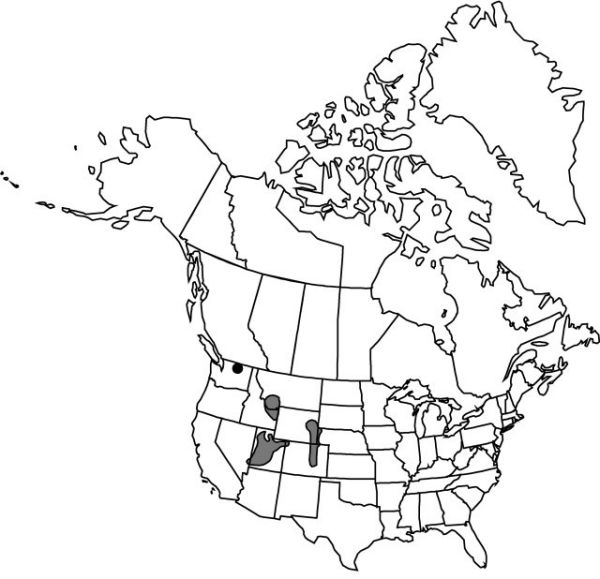Difference between revisions of "Spiranthes diluvialis"
Brittonia 36: 11, figs. 1C, D, 2A–C, F. 1984.
FNA>Volume Importer |
FNA>Volume Importer |
Revision as of 21:38, 16 December 2019
Plants 20–62 cm. Roots few–several, horizontal to descending, slenderly tuberous, to 1 cm diam. Leaves persisting through anthesis, usually restricted to base of stem, ascending, linear-lanceolate, to 28 × 1.5 cm. Spikes usually tightly spiraled, 3 flowers per cycle of spiral, rarely loosely spiraled with more than 4 flowers per cycle; rachis sparsely (rarely densely) pubescent, some trichomes capitate, glands obviously stalked (longest trichomes 0.2–0.4 mm). Flowers white or ivory, ascending, strongly gaping from near base (lip prominently diverging from sepals and petals); sepals distinct or connate at base, 7.5–15 mm; lateral sepals broadly spreading to loosely incurved, often raised above rest of flower or often appressed; petals linear, apex acuminate; lip often yellow centrally, ovate, lanceolate, or oblong, with variably evident median constriction, occasionally subpandurate, 7–12 × 2.5–6.8 mm, margins crisped, entire, or apically dentate, distal surface mostly glabrous adaxially; basal calli prominent; veins few to several, branches parallel to wide-spreading; viscidia linear to linear-lanceolate; ovary mostly 4–10 mm. Seeds monoembryonic. 2n = 74.
Phenology: Flowering Jul–Aug(–Sep).
Habitat: Mesic to wet riparian meadows, marshes, stream banks
Elevation: 1300–1800 m
Distribution

Colo., Idaho, Mont., Nebr., Nev., Utah, Wash., Wyo.
Discussion
Of conservation concern.
Spiranthes diluvialis is an amphiploid product of hybridization of S. romanzoffiana and S. magnicamporum. It is correspondingly somewhat variable in individual characters, but specimens can be determined through consideration of a combination of features. The position of lateral sepals commonly varies within an inflorescence, and on the same flower one is often tightly appressed while the other is widespreading and ascending. Lip venation in particular can be helpful, as most branches are parallel, but often a few are wide-spreading.
